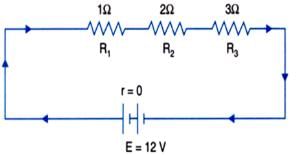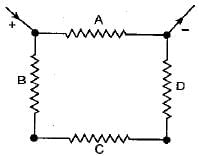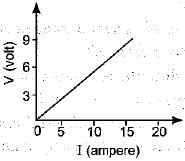Class 10 Exam > Class 10 Tests > Science Class 10 > Test: Electricity - 1 - Class 10 MCQ
Test: Electricity - 1 - Class 10 MCQ
Test Description
10 Questions MCQ Test Science Class 10 - Test: Electricity - 1
Test: Electricity - 1 for Class 10 2024 is part of Science Class 10 preparation. The Test: Electricity - 1 questions and answers have been
prepared according to the Class 10 exam syllabus.The Test: Electricity - 1 MCQs are made for Class 10 2024 Exam. Find important
definitions, questions, notes, meanings, examples, exercises, MCQs and online tests for Test: Electricity - 1 below.
Solutions of Test: Electricity - 1 questions in English are available as part of our Science Class 10 for Class 10 & Test: Electricity - 1 solutions in
Hindi for Science Class 10 course. Download more important topics, notes, lectures and mock
test series for Class 10 Exam by signing up for free. Attempt Test: Electricity - 1 | 10 questions in 10 minutes | Mock test for Class 10 preparation | Free important questions MCQ to study Science Class 10 for Class 10 Exam | Download free PDF with solutions
Test: Electricity - 1 - Question 1
All elements of an electric circuit are connected in series except :
Detailed Solution for Test: Electricity - 1 - Question 1
Test: Electricity - 1 - Question 2
According to Ohm’s law, what is the relationship between voltage (V), current (I), and resistance (R)?
Detailed Solution for Test: Electricity - 1 - Question 2
| 1 Crore+ students have signed up on EduRev. Have you? Download the App |
Detailed Solution for Test: Electricity - 1 - Question 3
Test: Electricity - 1 - Question 4
The least resistance obtained by using 2Ω , 4Ω, 1Ω and 100Ω is
Detailed Solution for Test: Electricity - 1 - Question 4
Test: Electricity - 1 - Question 5
Two devices are connected between two points say A and B in parallel. The physical quantity that will remain the same between the two points is
Detailed Solution for Test: Electricity - 1 - Question 5
Detailed Solution for Test: Electricity - 1 - Question 6
Test: Electricity - 1 - Question 7
To get 2Ω resistance using only 6Ω resistors, the number of them required is
Detailed Solution for Test: Electricity - 1 - Question 7
Test: Electricity - 1 - Question 8
Three resistors of 1Ω, 2 Ω and 3 Ω are connected in series with a battery of 12 V as shown in figure. Values of potential differences V1, V2, V3 across the three resistors have respective values :

Detailed Solution for Test: Electricity - 1 - Question 8
Detailed Solution for Test: Electricity - 1 - Question 9
Test: Electricity - 1 - Question 10
The diagram shows a network of four resistors which is connected to an electric source. Identify the resistors which are connected in series in this network :

Detailed Solution for Test: Electricity - 1 - Question 10
|
85 videos|437 docs|75 tests
|
Information about Test: Electricity - 1 Page
In this test you can find the Exam questions for Test: Electricity - 1 solved & explained in the simplest way possible.
Besides giving Questions and answers for Test: Electricity - 1, EduRev gives you an ample number of Online tests for practice





















